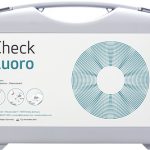January 2020
In our quest to ‘Make Nutrition Visible’ in 2020, we are bringing you new content on the vitamins and minerals around you. Thanks to Sight and Life for their publication “Vitamins and Minerals: A Brief Guide“, which provided the inspiration for this new series and for much of the content!
Vitamins and Minerals! You may have heard about them, and perhaps you even know about their important role in sustaining a healthy life.
Vitamins are essential organic nutrients that are vital to sustaining life. A mineral is an inorganic crystalline element which is taken from the Earth. Vitamins and minerals are needed and consumed in small quantities by the body, which is why we call them micronutrients. Unlike plants, humans and animals cannot themselves produce all the vitamins necessary for their metabolism as we lack the enzymes used to make these vitamins and minerals in the body. Thus, we need to consume them through the foods we eat.
Since the early 20th century, our knowledge of the function of vitamins and minerals has increased tremendously. We now know that each of the vitamins and minerals known today has specific functions in the body. However, there exists no single food that contains the full range of vitamins and minerals in adequate quantities needed by the body. We must, therefore, eat a wide variety of foods to meet our daily requirements, or risk deficiencies, which can have wide-ranging effects on our health. This truly puts vitamins and minerals as an integral part of our diets.
The term “vitamin” comes from the root words “vital” and “amine,” and was coined by the Polish-American scientist, Casimir Funk in 1912 while working to extract vitamin B1 from rice bran. He believed that this vitamin was a nitrogenous compound, or amine, which was vital for life. In 1920, Sir Jack Drummond, a British scientist, suggested that vitamins should be classified by the letters of the alphabet, according to the order of their discovery. This gave birth to the naming of vitamins as we know them today.
Vitamins can be classified as fat-soluble or water-soluble. The fat-soluble vitamins (A, D, E, and K) are stored in the liver and fatty tissue; they need to be consumed with sources of fats or oils for them to be properly absorbed by the body. The water-soluble vitamins (B-complex and C) need regular replacement in the body. Similarly, minerals can also be divided into two categories – macrominerals and trace minerals – based on their requirements by the body. Macrominerals are required in larger quantities (more than 100mg) and include calcium, phosphorus, magnesium, sodium, potassium, chloride, and sulfur. Trace minerals, on the other hand, are needed in very small quantities, such as manganese, copper, iodine, zinc, cobalt, fluoride, and selenium. Iron, although considered a trace mineral, is needed in somewhat greater quantity than for the other trace minerals.
There are nearly 30 vitamins and minerals which are essential for a variety of biological functions. In this series, we’ll take a closer look at many of these micronutrients, as they are often called, and help you to understand why they are so important, how we can get enough of them in our diets, and how to measure them! Next in this series, we will discuss Vitamin A and Iron!
















































































